Alaska Fish & Wildlife News
January 2020
Reflecting on Our Shared Resources
A Historical Perspective on Wildlife Management
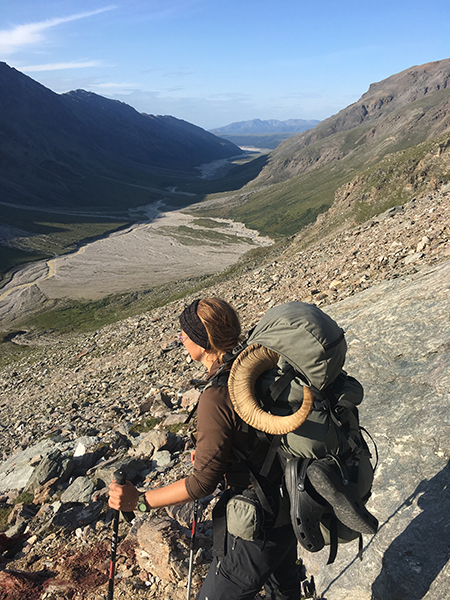
Happy New Year everyone! Welcome to the 2020s. I’m personally not one for New Year’s resolutions, nonetheless it’s hard not to acknowledge the significance of changing times, the dawning of a new decade (whew, the 2010s went fast!), and the longing for spring and new beginnings. Despite my bah-humbug approach to New Year’s resolutions it does seem to be a very appropriate time to reflect upon a topic that is near and dear to most Alaskans, myself included, and I suspect most reading Alaska Fish and Wildlife News (AFWN); our shared interest in abundant, productive, well managed, and properly safeguarded fish, wildlife, and their habitats. For most, whether a birder, hunter, photographer, back-country enthusiast, fisher, or simply an urban armchair reader; fish, wildlife, and our natural environment stir some emotions. Perhaps that’s because these shared resources allow us to feed our families, provide spiritual connection, or provide an opportunity to spend time with friends and families in the outdoors.
The changing face of wildlife management
The way fish and wildlife are managed and safeguarded in this country is changing, making it worth a bit of New Years, new decade-type reflection. Some of the key funding mechanisms that financially support studying and managing fish and wildlife are declining and crumbling. Without engagement from you, your friends, and our outdoor enthusiast colleagues, our fish and wildlife populations run the risk of becoming imperiled through apathy, ignorance, and indifference. Are you aware that all fish and wildlife in North America are held in trust for you and all citizens? Do you know why certain species are hunted while others are not? Where does your fishing and hunting license money go? What’s being done to safeguard habitats for your favorite species and who is responsible for ensuring that? Who pays the bill? And what about this Alaska Board of Game thing I hear about on the news?
Oversight and management of North America’s fish and wildlife populations is a broad, rich, and complex topic that over the next four months AFWN will attempt to breakdown for all of those that enjoy, use, and find connection with these resources. Trust me, it’s more interesting than you might think. The February article will explore the Public Trust Doctrine (PTD), the idea that in the United States all fish and wildlife are shared resources and held in trust for the benefit of all citizens. It will also break down the open and public processes the PTD requires as well as the financial mechanisms that are used to support it. In March, you’ll learn how to engage and affect regulatory change in Alaska. Yes, you have the singular ability to affect change through a public process. The final article in April will outline the uncertain future with which wildlife and wildlife managers are struggling. Specifically, who will financially support future management and stewardship? The power of the time-tested “user pay-public benefit” system is changing and we must develop new innovative solutions to support the same level of stewardship we’ve come to expect.
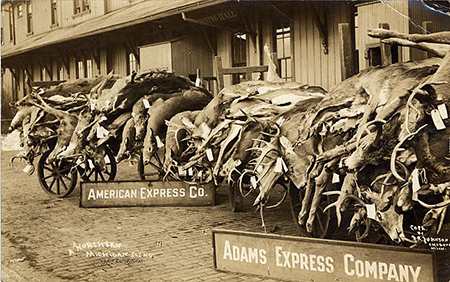
Still with me? Good. But before we dive into policy, funding, and what your license fees support, let’s take a deep breath and a big step back, way back. This first article in the series will try to paint the historical picture of why our wildlife conservation approach in North America is so unique and frankly among the most envied systems of fish and wildlife conservation in the world. However, it has taken us several hundred years, several species going extinct and nearly wiping out numerous others, and millions of hours of litigation in the courts to get to this point.
Public trust & market hunting
When Europeans first wet their boots on the shores of the Eastern Seaboard, perspectives on fish and wildlife were a bit different. These individuals were coming from European countries where access to fishing and hunting was granted to a very wealthy few – the landowners. When the first settlers observed the abundant fish and wildlife populations in North America they were overcome with the richness of the landscape and seemingly endless bounty. However, many wealthy European elite attempted to bring those same beliefs of fish and wildlife ownership “across the pond” to the new colonies. This approach was not widely supported by the growing masses and many fought the wealthy landowners and the notion they held exclusive access and ownership to fish and wildlife. It’s important to remember that back in the early days of our union, fishing, hunting, and trapping was a requirement for life. Access to resources was more than something fun to do in September, it was critical for the very survival of the colonists.
In 1842, the United States Supreme Court ruled in Martin vs. Waddell and thus setting a precedent regarding ownership of fish and wildlife resources through the Public Trust Doctrine (PTD). Beginning in AD 529 in the Institutes of Justinian the notion of equal access to shared resources was first documented. The PTD, a now common law, ascribed ownership of fish and wildlife to the states which would be held in trust for all citizens (present and future – the beneficiaries of the trust). Despite access and ownership to our shared resources being legally delineated, exceedingly few protections were in place in this young country to safeguard overexploitation of the shared resources. Thus began a period of rampant, market-driven hunting, trapping, and fishing. Overharvested and declining fish and wildlife populations simply fueled further expansion north and west into new areas with “untapped potential.” In addition to overharvesting fish and wildlife, extensive logging and mining were transforming the habitat for fish and wildlife in some locations. By the end of the 1800s, once abundant populations of bison, elk, deer, and turkeys were rare, and in some areas locally extinct. Once rich landscapes of mature forests and pristine waterways were now cut, burned, drained, dammed, and funneled to serve the pulsating machine of manifest destiny expansion. Access to fish and wildlife remained unimpeded to the citizenry.
Enlightenment and conservation
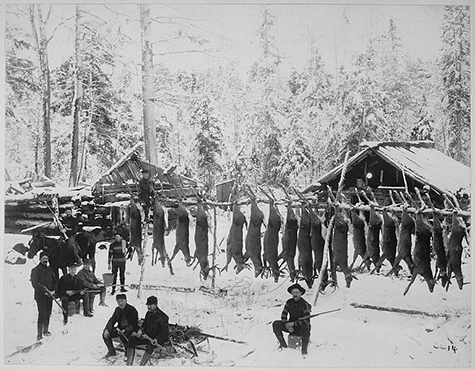
It wasn’t until the late 1800s that states and U.S. territories, the trustee of our fish and wildlife populations, began to create the first fish and wildlife laws attempting to curtail overharvest. With the PTD as the foundation of fish and wildlife policy, a model began to take shape across this country through numerous court cases now largely regarded as the North American Wildlife Management Model (referred to as the Model). The Model has several key tenants: first, fish and wildlife are held in trust (the PTD). Second, and of particular importance during the turn of the 1900s, a prohibition on the commerce of dead wildlife. In other words, market hunting was outlawed. Third, access to the resource will be allocated by law, not birthright.
With market hunting outlawed, many livelihoods were at risk and outlaw hunters continued to sell illegally harvested game and wild birds across state lines. In 1900, John Lacey sponsored a bill, widely known as the “Bird Bill”, due to the concern about the illegal sale of bird feathers, that outlawed interstate transport of illegally harvested game (Lacey Act). This “nature lovers” bill that was strongly supported by fledgling conservation organizations like the Boone and Crocket Club, Audubon Society, and President Roosevelt himself, ushered in a new era of fish, wildlife, and habitat protections over the next four decades.
Soon, many key pieces of fish and wildlife legislation and policy were created through a ground swell of support and concern about declining fish and wildlife populations, habitat degradation, and water quality. President Roosevelt created the first National Wildlife Refuge. The Migratory Bird Treaty Act was enacted that safeguarded migratory nongame birds and waterfowl that crossed international boundaries with Canada and Mexico. A growing cadre of game wardens began enforcing new laws that restricted harvest, and to a lesser degree monitoring fish and wildlife populations. For many years, these game wardens were the primary means through which states and the federal government enforced new laws, protected, and monitored various game species and populations. The first fishing and hunting seasons and land use policies were created. Access to resources was restricted through the purchase of fishing and hunting licenses and the money funneled into state coffers. Although those funds were often used for general state business they also supported the growing enforcement of new fish and game laws. It also became apparent that several species or collections of species that regularly cross international boundaries (i.e. waterfowl and marine mammals) would be more appropriately overseen by the federal government.
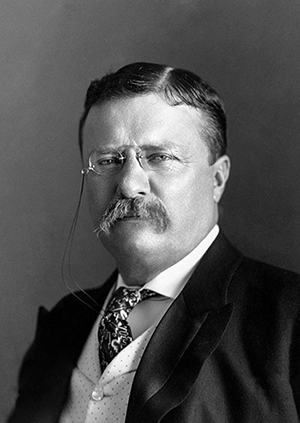
Along with progress regarding fish and wildlife protection and conservation in the early 1900s, influential people of the time began to recognize the need for educated fish and wildlife professionals to study and monitor the species that were still being harvested at questionably unsustainable levels. More importantly, biological data was needed to inform the regulatory decision makers. What level of harvest is sustainable? How large of a population can a particular habitat support? How should hunting and fishing seasons and harvest limits be determined? These were several of the questions that at the time, no one knew how to answer and no one knew how to create this new type of fish or wildlife professional. However, in December 1930 Aldo Leopold, often referred to as the “father of modern wildlife management,” provided a report to the American Game Conference in New York City. In that oral report, he recommended the establishment of “a wildlife profession.” These “biologists” would staff growing state and federal agencies tasked with maintaining healthy and sustainable fish and wildlife populations as outlined in the PTD. He even went so far as to suggest that the people harvesting the resource be the very ones to fund this new profession and the work needed to manage them. These professionals and the necessary population monitoring would be financially supported through existing fishing and hunting license fees but also through an existing national 11 percent excise tax on the sale of firearms, and ammunition. At the time of this recommendation, the excise tax revenue was being set aside to fund bird management under the new Migratory Bird Treaty Act.
The birth of the modern system
In 1937, President Franklin Roosevelt signed a bill into law called the Wildlife Restoration Act sponsored by Key Pittman (Nevada) and Absalom Robertson (Virginia). This bill redirected the revenue from the tax on firearms and ammunition to be used by each state fish and wildlife agency on an equitable basis for the purpose of wildlife management, monitoring, and research. What is now simply known as the Pittman-Robertson (PR) funds has become the primary financial tool and backbone of modern wildlife conservation in the United States. In 1950, President Truman signed a similar bill called the Sportfish Restoration Act sponsored by John Dingell (Michigan) and Edwin Johnson (South Dakota) now known as the Dingell-Johnson (DJ) Act. This act required and collected an excise tax on fishing rods, lures, and marine fuel and is the primary tool for modern sportfish conservation by state agencies. According to the book ‘North American Wildlife Policy and Law’ (2018), since the inception of these critical pieces of legislation through 2016, nearly $10 billion has been collected for Wildlife Restoration and $8.3 billion for Sportfish Restoration and provided back to the state fish and wildlife management agencies.
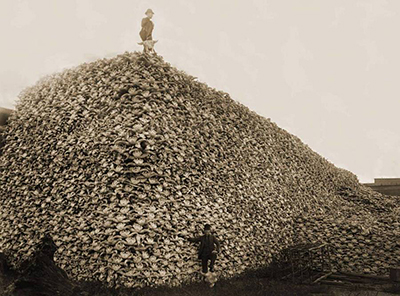
PR and DJ funds are required to be matched (3:1) by each state with their fishing and hunting license revenue. For each dollar a state generates in license revenue they can match three dollars of federal PR or DJ money. This is the primary source of funding for every state fish and wildlife management agency in the country.
It’s important to note that the PTD addresses all fish and wildlife species not just those that are or were harvested by fishers, hunters, or trappers. However, at the point in our country’s history when legislation to safeguard species and modern fish and wildlife management was being created, fishing and hunting was of vital importance to the citizenry and consumptive uses (harvest) was chief among the goals of that management. Therefore, from that perspective in the 1920s, 30s, and 40s came the framework that is still being largely exercised today by state fish and wildlife management agencies. That is a “user pay, public benefit” system. That is a fisher and hunter financially supported system to safeguard and sustainably manage those species being exploited by fishers and hunters. Non-fishers and non-hunters also stand to enjoy these abundant fish and wildlife populations through their long-term sustainable management. Most of the species harvested through state game regulations are among this country’s most productive and healthy. The conservation funding and administrative mechanisms put in place in the early 1900s have been tested and supported over innumerable legal battles, political regimes, financial ups and downs, and massive social and cultural change.
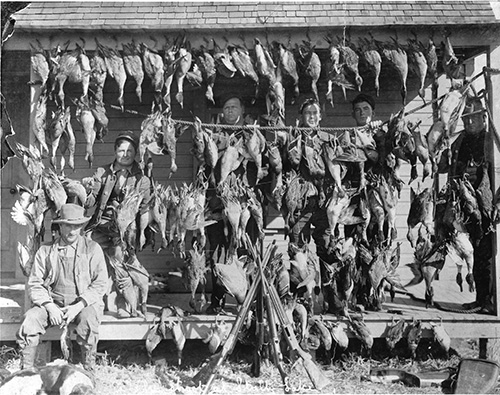
This state regulated and state funded model is the general model for how most fish and wildlife are managed under the PTD. States are also responsible for monitoring and safeguarding species and populations that are not fished, hunted, or trapped. Separate funding mechanisms, although generally far less financially robust, are in place to ensure state agencies have the ability to monitor and provide recommendations and action on species with non-consumptive management goals (for example, songbirds, raptors, reptiles, bats, etc.).
The federal government including the U.S. Fish and Wildlife Service, National Park Service, U.S. Forest Service, Bureau of Land Management, National Marine Fisheries Service, and others all have unique jurisdictions on specific groups of species or specific land parcels to achieve specific goals some of which allow harvest by consumptive users. Typically, these are species that regularly cross state or international boundaries like migratory waterfowl or songbirds, endangered species, marine mammals, and internationally significant fish stocks.
Non-governmental Organizations (NGOs) like Ducks Unlimited, Rocky Mountain Elk Foundation, Safari Club International, National Wild Turkey Federation to name a few also play a unique role in fund raising and habitat protection of our national shared resources. Much of the fundraising efforts by these NGOs and its members can be used by state fish and wildlife agencies to match federal PR or DJ funds.
The complexities and nuance of our current, modern, diverse fish and wildlife management landscape will be the primary focus of the next article. In that article, we’ll explore in more detail the structure of the PTD and how that delineates fish and wildlife management in each state including what biologists actually do, how your license fees are utilized, and the financial significance of license revenue, specifically in Alaska. We’ll explore the unique dual state and federal management structure that has taken shape in Alaska, and the value that local and national NGOs provide in sustaining Alaska’s fish and wildlife populations.
If you’re still reading these words, thank you! These are your resources and in this increasingly complicated, divided, opportunity-rich country, our fish and wildlife still belong to all of us. It is our duty to engage and ensure they remain of interest and present in our day to day life for many generations to come.
Wildlife Biologist Rick Merizon is the statewide Small Game Program Coordinator based in Palmer
Subscribe to be notified about new issues
Receive a monthly notice about new issues and articles.
